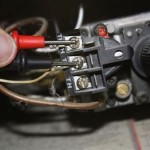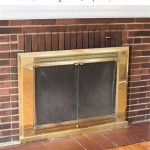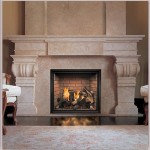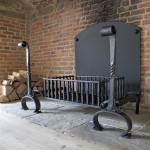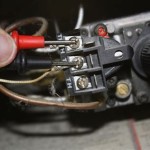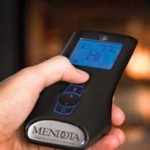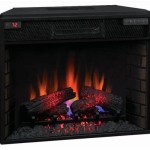Heatilator Wood Fireplace Blower Fan: Enhancing Fireplace Efficiency and Comfort
A Heatilator wood fireplace often serves as a focal point in a home, providing warmth and a comforting ambiance. To maximize the efficiency and comfort derived from these fireplaces, a Heatilator wood fireplace blower fan plays a crucial role. These fans are designed to circulate heated air more effectively, distributing the warmth produced by the fire throughout the living space. This article explores the functionality, benefits, selection criteria, installation, maintenance, and troubleshooting associated with Heatilator wood fireplace blower fans.
The primary function of a fireplace is to generate heat. However, without a blower fan, much of this heat rises directly up the chimney, resulting in significant heat loss. The blower fan addresses this issue by drawing cooler air from the room, passing it through the fireplace’s firebox where it is heated, and then expelling the warmed air back into the room. This forced convection process accelerates the heating rate and ensures a more even temperature distribution.
Understanding the Core Functionality
Heatilator wood fireplace blower fans are typically installed beneath or behind the firebox, in a chamber specifically designed for this purpose. The fan motor drives a squirrel cage or centrifugal fan, which pulls air across the heated metal surfaces of the firebox. The design ensures that the fan motor itself remains shielded from the extreme heat. The heated air is then directed through vents into the room, effectively expanding the reach of the fireplace’s warmth.
The operation of the blower fan is often controlled by a thermostat or speed control. A thermostat allows the fan to automatically turn on and off based on the firebox temperature. When the firebox reaches a pre-set temperature, the thermostat activates the fan, and when the fire cools down, the fan shuts off. A speed control gives the user manual control over the fan’s speed, adjusting the airflow to suit their preferences.
The effectiveness of a Heatilator wood fireplace blower fan depends on several factors, including the fan’s airflow capacity (measured in cubic feet per minute or CFM), the design of the fireplace, and the overall insulation of the home. A higher CFM rating generally indicates a more powerful fan capable of circulating more air. However, it’s essential to select a fan that is appropriately sized for the fireplace to avoid excessive noise or inefficient operation.
Key Benefits of Using a Blower Fan
The advantages of using a Heatilator wood fireplace blower fan extend beyond simply increasing heat output. These benefits contribute to a more comfortable and efficient heating experience. The most significant benefits are:
Improved Heat Distribution: Blower fans eliminate the problem of localized heat near the fireplace, ensuring that warmth reaches distant corners of the room. This even distribution reduces cold spots and creates a more comfortable environment throughout the space.
Increased Heating Efficiency: By forcing air circulation, the blower fan reduces the amount of heat lost up the chimney. This allows the fireplace to heat the room more effectively, potentially reducing the need for supplemental heating sources and lowering energy costs.
Faster Heating: The forced convection created by the blower fan significantly accelerates the heating process. The room warms up more quickly compared to relying solely on radiant heat from the fireplace.
Enhanced Comfort: The consistent temperature provided by a blower fan contributes to a more comfortable living environment. Eliminating drafts and cold spots enhances the overall enjoyment of the fireplace.
Reduced Firewood Consumption: While not a direct result, by maximizing the usable heat from each fire, a blower fan can indirectly contribute to reduced firewood consumption. Efficient heat distribution means less need to continually add fuel to maintain a comfortable temperature.
Selecting the Right Blower Fan
Choosing the appropriate Heatilator wood fireplace blower fan requires careful consideration of several factors. The compatibility of the fan with the specific fireplace model is paramount. Most Heatilator fireplaces are designed with specific blower fan models in mind, and using an incompatible fan can lead to performance issues or even damage to the fireplace.
Compatibility: Consult the fireplace’s owner’s manual or the Heatilator website to determine the recommended blower fan models. Compatibility is determined by factors such as the size of the blower chamber, the mounting points, and the electrical connections.
Airflow Capacity (CFM): Choose a fan with an appropriate CFM rating for the size of the room being heated. A larger room will require a fan with a higher CFM to ensure effective circulation. However, avoid oversizing the fan, as this can result in excessive noise and energy consumption.
Noise Level: Consider the noise level of the fan, especially if the fireplace is located in a living room or bedroom. Look for fans with noise-reduction features or those advertised as "quiet operation." The noise level is typically measured in decibels (dB). A lower dB rating indicates a quieter fan.
Features: Explore additional features such as thermostats, speed controls, and remote control operation. A thermostat provides automatic on/off functionality, while a speed control allows for manual adjustment of the airflow. Remote control operation adds convenience.
Energy Efficiency: Look for Energy Star-rated blower fans, which are designed to consume less energy while providing comparable performance. This can result in lower operating costs over the lifespan of the fan.
Warranty: Check the warranty offered by the manufacturer. A longer warranty period indicates greater confidence in the product’s reliability.
It is often advantageous to examine user reviews and ratings online to gain insights into the real-world performance and reliability of different blower fan models. These reviews can provide valuable information regarding noise levels, ease of installation, and overall satisfaction.
Installation and Safety Considerations
Installing a Heatilator wood fireplace blower fan can often be accomplished as a do-it-yourself project, provided that the individual possesses basic mechanical skills and a thorough understanding of electrical safety. However, for individuals uncomfortable working with electricity or uncertain about any aspect of the installation process, it is advisable to seek professional assistance.
Safety First: Before commencing the installation, disconnect the fireplace from the power source. This is a crucial safety precaution to prevent electrical shock.
Read the Instructions: Carefully read and understand the manufacturer’s instructions for the specific blower fan model being installed. These instructions provide detailed steps and diagrams that are essential for a successful installation.
Locate the Blower Chamber: Identify the blower chamber within the fireplace. This is typically located beneath or behind the firebox. Ensure that the chamber is clean and free of debris before proceeding.
Mounting the Fan: Follow the manufacturer’s instructions for mounting the fan within the blower chamber. Ensure that the fan is securely attached and properly aligned.
Electrical Connections: Connect the fan’s electrical wires to the fireplace’s wiring harness, following the instructions provided. Ensure that all connections are secure and properly insulated.
Testing the Fan: After completing the installation, reconnect the fireplace to the power source and test the fan to ensure that it is operating correctly. Verify that the fan turns on and off as expected and that the airflow is adequate.
It is essential to always adhere to local building codes and regulations when installing a fireplace blower fan. Improper installation can create safety hazards and potentially void the fireplace's warranty.
Maintenance and Troubleshooting
Regular maintenance is essential to ensure the long-term performance and reliability of a Heatilator wood fireplace blower fan. The primary maintenance task involves cleaning the fan blades and motor to remove dust and debris that can accumulate over time. This buildup can reduce airflow and cause the fan to operate less efficiently.
Cleaning: Disconnect the fireplace from the power source before cleaning the fan. Use a vacuum cleaner or a soft brush to remove dust and debris from the fan blades and motor. Avoid using water or harsh chemicals, as these can damage the fan.
Lubrication: Some blower fans may require periodic lubrication of the motor bearings. Consult the manufacturer’s instructions for specific lubrication recommendations. Use only the recommended type of lubricant.
Troubleshooting Common Issues:
Fan Not Turning On: Check the power supply to the fireplace. Ensure that the thermostat or speed control is properly set. Verify that the fan’s electrical connections are secure. If the fan still does not turn on, the motor may be faulty and require replacement.
Reduced Airflow: Clean the fan blades and motor to remove dust and debris. Check for obstructions in the blower chamber or vents. Ensure that the fan is properly mounted and aligned.
Excessive Noise: Check for loose screws or mounting hardware. Ensure that the fan blades are not rubbing against the housing. The motor bearings may be worn and require lubrication or replacement.
Overheating: Ensure that the vents are not blocked. Check for adequate ventilation around the fireplace. The fan motor may be overheating due to excessive dust buildup or a faulty thermostat.
If troubleshooting steps do not resolve the issue, consulting a qualified fireplace technician is recommended. Attempting to repair complex electrical components without proper knowledge can be dangerous.

Fireplace Blower Fan Kit For Heat Glo N Heatilator Gfk 160a 160

Fk18 Heatilator Wood Fireplace Blower Dual Fan Kit Single Sd Factory For

Blower Kit For Heatilator Fireplaces Gfk4

Gfk 160 Gfk160 Fireplace Blower For Heat N Glo Heatilator Gti And Helia Beer Co

Quadrafire Amp Heatilator Wood Stove Bk Acc Blower Fan Kit

Fk18 Heatilator Wood Fireplace Blower Dual Fan Kit Single Sd Factory Oem New

Heat N Glo Heatilator Blower 812 4900 Friendly Fires

Gfk 160 Gfk160 Fireplace Blower For Heat N Glo Heatilator Gti And Helia Beer Co

Heatilator Wood Stove Ws18 Ws22 Convection Blower Fan 812 4900

Quadrafire Heatilator Heat N Glo Blower Fan 812 4900

